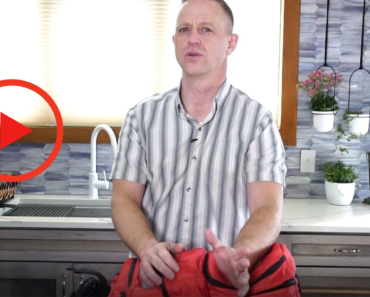A shelter is a crucial part of any thorough SHTF survival plan. While you probably already know the value of a shelter and may know how to build one, it’s easy to overlook what you should fill it with. You don’t know how long you’re going to be in there, so there’s a lot of ground to cover.
You probably have the three most important factors covered: food, shelter, and water. However, if you’re going to be in your bunker for days, weeks, or even years, you’ll want to go above the bare minimum. So here are ten critical additions to your survival shelter that many people overlook.
1. Communication Methods
By design, a survival shelter provides a strong barrier between you and the outside world. The downside to that is it makes it difficult to know what’s going on outside of your walls. You’ll need a way to communicate with people outside of your shelter to keep tabs on them and the situation.
Since there’s no telling what will work and what won’t in an SHTF scenario, you should have several communication methods. Short and long-range radios are a good, reliable option, but they’re limited. You can run an ethernet cable into your shelter for an internet connection but expect connectivity to drop in a crisis.
Make sure you bring extra batteries, chargers, and other accessories to keep your communication methods running for as long as possible. It’ll also help to learn how to repair them if necessary.
2. Sound
It’s easy to overlook the importance of sound since it surrounds you nearly everywhere you go. Even out in nature, away from the city, the air is full of noise, from wind to water to crunching leaves beneath your feet. Since we’re so accustomed to it, going without noise for long enough can be excruciating.
If your survival shelter walls are thick enough, it may be dead quiet in there. Bring something with you to fill the space and help your mind relax. Physical music media like vinyl records, CDs, or cassettes are ideal because you don’t know if your internet streaming platforms will work.
It doesn’t have to be music, either. You may find that a white noise machine does enough to keep the silence at bay. If you’re staying with someone, talk as much as you can.
3. Recreation
Similarly, you’ll want a few things in your shelter to help pass the time. Recreation may not be at the top of your list for bunker considerations, but keeping high spirits is critical to survival.
Games and other activities will help the days seem shorter and improve your mental health. They’ll also stave off the boredom that could drive you to leave your shelter and enter a dangerous outside world. Many recreational activities have additional mental benefits as well.
Games like billiards require creative problem-solving skills, so they can help keep your mind sharp. Create a list of things you like to do that would fit in the space of your survival shelter. Prioritize them by how much they could help develop thinking skills or offer replay value and bring the top entries.
4. Plants
In an SHTF scenario, the outside air may become harmful to breathe. You probably already have a ventilation system for your shelter or plan to install one, but you can take further steps to improve air quality. Growing plants in your bunker is an excellent option.
Plants take carbon dioxide from the air and produce oxygen, naturally giving you fresh air to breathe. Many are also edible, so you can have a regenerating food source to eat alongside or instead of your shelved goods.
Keep in mind that plants will need light and water to grow. If you run a water pipeline to your shelter and install sufficient lights ahead of time, that shouldn’t be an issue. Still, you should consider this when rationing your resources.
5. Climate Control
Another crucial addition that may seem like a luxury at first is climate control. Depending on how well-sealed your shelter is, it may get suffocatingly hot during the warmer months or freezing in the winter. These temperature extremes can cause your body to expend more energy than it needs to, which you don’t want.
Having a basic heating and cooling system in your shelter will help prevent that. Of course, conventional space heaters and AC units use electricity. If you have a reliable generator or other means of producing electricity, that’s not an issue, but if not, you may want to aim for passive heating and cooling.
Building your shelter with materials with high solar mass facing the sun can help heat it without electricity. Similarly, running underground tubes with one opening outside and one inside can provide natural cooling.
6. Natural Light
Another resource people often take for granted is natural light. Keeping artificial lights in your shelter is important, but you’ll want some natural light, too, to maintain high spirits and aid plant growth, if you have any. Since windows aren’t always an option in a survival shelter, you’ll have to use a more creative solution.
Skylights can be a great way to bring sunlight into your shelter, but you don’t want them to be too large. Instead, you can use a solar tube. These structures feature a small weatherproof window or dome at the top and reflective material down the shaft to maximize the otherwise small source of light.
Painting your shelter’s interior white will help, too. Sunlight will reflect off of this color, helping it fill the space.
7. Fitness Equipment
It’s important to stay as healthy as possible while living in your shelter. On top of eating well, you’ll need to exercise, so you should consider keeping fitness equipment in your bunker. While you don’t need an entire home gym, a few weights or resistance bands can go a long way.
Resistance training with weights or bands will help you stay strong and avoid muscle atrophy. If you have enough space, you could also have a cardio machine like a rower or runner to maintain a healthy weight. Remember to look for equipment you like using, too, because if it’s not enjoyable, it’ll be hard to keep up.
If you don’t have much space, you can still create an area for yoga or other flexibility exercises. Training your flexibility substantially reduces your risk of injury, so it’s a crucial part of post-SHTF scenario survival.
8. Waste Disposal System
Waste disposal is so convenient today that it’s easy to overlook its importance. If you don’t have some way to get rid of waste, your shelter will quickly become cluttered and dirty, which isn’t conducive to long-term survival.
You can minimize waste by eliminating it from the start. Avoid disposable plastic packaging for all of the items in your survival shelter, instead opting for biodegradable or reusable options. You can then create an area in your bunker for composting the biodegradable packaging and reuse the others as storage solutions.
You can dispose of human waste by repurposing it as fertilizer for your garden or root cellar. If possible, try to keep this area separate from your living area to minimize the odor.
9. Extra Clothes
You won’t likely be socializing much in an SHTF scenario, so changing your clothes may seem unnecessary. However, even with climate control, temperatures will likely fluctuate in your shelter, and your clothes will get dirty over time even if you’re not out and about.
If you wear the same clothes every day for months, it could contribute to bacterial growth. That could cause strong odors and discomfort or even pose health risks if it gets extreme enough. Prevent those scenarios by packing at least a few changes of clothes in your shelter.
Pack clothes that fit various weather and temperature conditions. You should also aim to bring comfortable clothes since you’ll be wearing them for a while.
10. Storage
Finally, don’t overlook storage considerations in your survival shelter. Once you know everything else you intend to store or take with you, think about how you’ll organize it. If you just leave everything lying around, you may have trouble finding critical resources when you need them, and clutter can impact your mental health.
Storage is also crucial because you’re likely dealing with limited space inside your shelter. Storage bins or drawers that fit under furniture are helpful, as are shelves built into the wall instead of jutting out. The more you can maximize your internal space, the easier it will be to live in the shelter for extended periods.
You may also want to consider using multi-purpose storage solutions. You could use a large bin as a table, for example. Remember to cater to any unique storage needs of the food, plants, or other resources you bring, too.
Don’t Forget About These Additions
Your survival shelter should, as the name implies, be about survival, not luxury. That said, there are many things crucial to long-term survival in a small, isolated space that you may not think about. These may seem unnecessary at first, but you’ll be glad for them in the long run.
As you design and build your survival shelter, don’t overlook these ten additions. While they may not be as important as food and water, they can dramatically alter your shelter’s effectiveness.



![Survival Medicine Podcast: Hypothermia, Off-Grid Nursing, Pt. 1 [PODCAST] Survival Medicine Podcast: Hypothermia, Off-Grid Nursing, Pt. 1 [PODCAST]](https://survivalcove.com/wp-content/uploads/2021/11/survival-medicine-podcast-banner-370x297.jpg)
![Amber Landry and Emily Livingston: Women’s Survival [PODCAST] Amber Landry and Emily Livingston: Women’s Survival [PODCAST]](https://survivalcove.com/wp-content/uploads/2021/10/Packing-Goats-Hunting-Survival-370x297.jpg)























